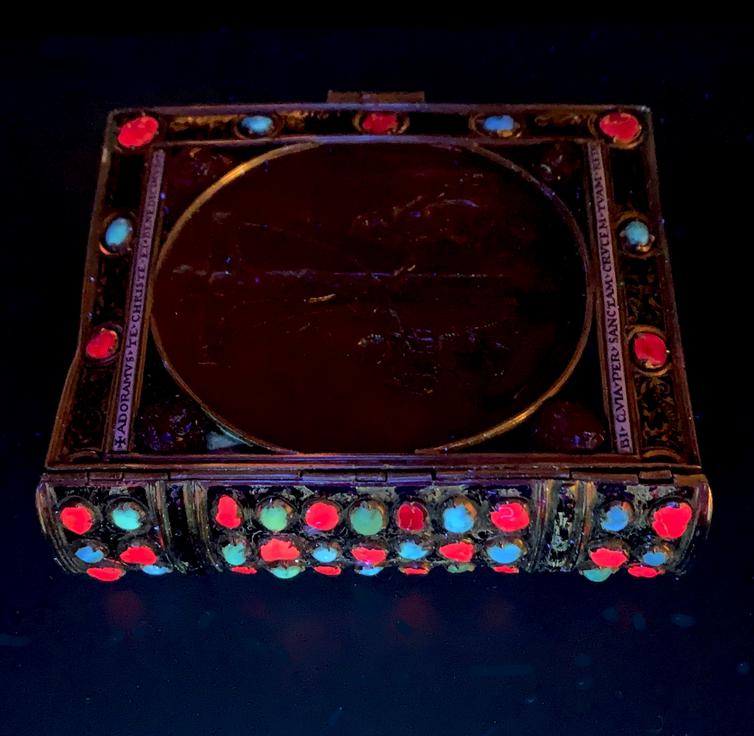
Analyses spectroscopiques sur site des gemmes du Livre d’heures de François 1er
Gérard Panczer et Elodie Roméo (équipe SOPRANO), en collaboration avec des collègues de Lyon, ont publié un article intitulé " The Book of Hours of King Francis I of France: History and Gemmological Analysis " dans la revue The Journal of Gemmology.Les gemmes du livre d'heures de la Renaissance, acheté en 1538 par François 1er et acquis par le Louvre en 2018 auprès de S. J. Phillips Ltd à Londres pour près de 10 millions d’euros, ont été expertisées sur le site du Louvre par diverses spectrométries portatives (Raman, XRF, réfractométrie, fluorescence). Les gemmes sont constituées de cornaline (deux intailles et huit camées), de rubis (27 pierres polies) et de turquoises (24 cabochons). La pierre facettée sertis sur le fermoir du livre s’avère être un rhodolite (grenat pyralmandin Mg-Fe) et non une tourmaline telle décrite depuis 1942. Les éléments traces des rubis indiquent qu’ils ont été extraits de la région de Mogok en Birmanie. Sur la base de considérations historiques, la turquoise pourrait provenir de Perse ou d’Ouzbékistan et les cornalines d'Inde ou de Saxe. La rhodolite à facettes pourrait provenir d'Inde ou du Sri Lanka, et a très probablement été ajoutée au fermoir à une époque plus récente, probablement entre 1842 et 1884.
The Book of hours of King Francis I of France: spectroscopic analyses of its gemstones
Gérard Panczer and Elodie Roméo (team SOPRANO), with colleagues from Lyon, published an article entitled " The Book of Hours of King Francis I of France: History and Gemmological Analysis " in The Journal of Gemmology.The gems from the Renaissance Book of Hours, purchased in 1538 by François I and acquired by the Louvre Museum in 2018 from S. J. Phillips Ltd in London for nearly 10 million euros, were appraised at the Louvre site by various portable spectrometers (Raman, XRF, refractometry, fluorescence). The gems consist of carnelian (two intaglios and eight cameos), rubies (27 polished stones) and turquoises (24 cabochons). The faceted stone set on the clasp of the book was identify as a rhodolite (pyralmandine Mg-Fe garnet) and not a tourmaline as described since 1942. The trace elements of the rubies indicate that they originate from the Mogok region of Burma. On the basis of historical considerations, turquoise could have come from Persia or Uzbekistan and carnelian from India or Saxony. The faceted rhodolite could have come from India or Sri Lanka, and was most likely added to the clasp at a later date, probably between 1842 and 1884.


















